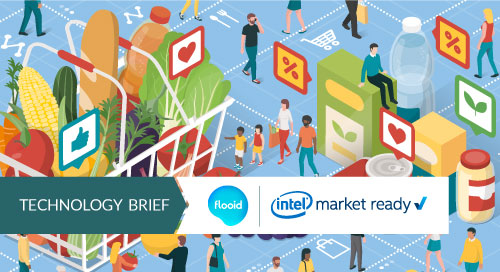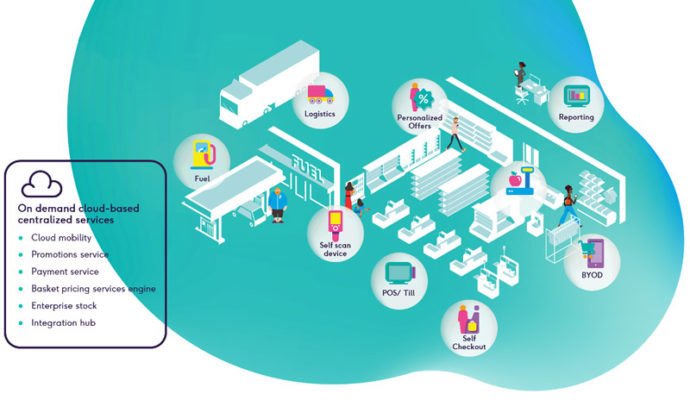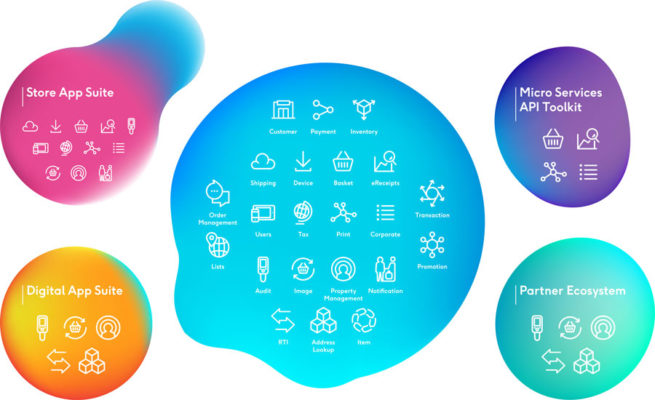Put All Your Retail Data in One Basket

Sure, virtual shopping is amazing. But that doesn’t mean retailers with a physical presence are going away anytime soon. Because even with the advent of AI, bots, and other ecommerce staples, most shoppers still value being able to see, touch, and feel their prospective purchases.
But clearly old-school brick and mortar isn’t enough on its own. That’s why innovative retailers are offering a seamless customer journey that blends online, mobile, and in-person shopping into one omnichannel “basket.” Items can be added to a customer’s cart, and the transaction finalized, at any point along the journey and via any medium.
Often, the purchase happens in-store, where customers can benefit from the knowledge and expertise of a trained salesperson. And having access to the retailer’s whole inventory—whether online or in another store—at the same time? That’s the icing (Figure 1).

But such a seamless digital journey isn’t a given. The software many retailers bought to run their retail and business applications 10, 15, even 20 years ago may be reliable but difficult to innovate on. The challenge lies in replacing the old with the new, which can take months or even years.
But if they want to respond effectively to the threat of ecommerce—and exploit the benefits of having a physical store—retailers don’t really have a choice. According to John Stretton, Flooid’s Chief Commercial Officer, “well-established businesses perish every month because of the limits imposed by their legacy technologies.”
With @makeitflooid, innovative retailers can offer a seamless customer journey—blending online, mobile, and in-person shopping into one omnichannel “basket.”
Streamlined Retail Data
By contrast, the seamless digital journey that shoppers crave depends on a suite of integrated technologies functioning well in the background—so the same prices, promotions, and products are available regardless of the channel. And the right software platform, which new apps can be built on, is a critical piece of the equation.
Flooid Solutions, by Flooid, allows retailers to implement new use cases and add new apps—self-checkout or mobile point of sale, for example—independent of the platform itself. Each new app offers different functionality, but their data feeds go through the same back-end system. In this way, the platform provides a base for practically unlimited, and easily deployed, innovation (Figure 2).

The Personas Behind Point of Sale
One of Flooid’s clients, a large travel retailer with a complex operation and a wide variety of retail stores, understands the risks of stagnation as well as any business. Before deploying Flooid Solutions, operating its quick-serve restaurants (QSRs) as well as its cosmetics, electronics, and convenience stores meant maintaining and paying for several different systems. If the retailer wanted to add a loyalty program, or apply tailored sales audit or tax rules, it couldn’t do so without vendor support.
That’s an expensive proposition, and the opposite of the scalable, agile solution it was looking for. But with Flooid Solutions, the client has to work with Flooid only to update any one of its brands. “There are much simpler integration patterns because now the transaction feeds are coming up through the same system to the head office,” said Scott Carpenter, Flooid’s North American CTO. “This makes for better reporting, more efficient cross-usage of resources, and a reduced total cost of ownership.”
A core feature of the Flooid platform is its set of different “personas,” one for each line of business. For example, a QSR uses a “restaurant persona,” which gives a restaurant look and feel at the front end. That is, the point-of-sale terminal displays an intuitive menu of food and drink items to the cashier—or to the customer during self-checkout.
And let’s say that the client was interested in gas stations; there’s a persona that knows how to control pumps. Now, in fact, it’s looking at how the company can add vending machines to the mix. To do that, Flooid would connect its APIs to the vendor’s software, call the vending machine journey a “basket,” and pass the transaction through the back-end. “They’re just personas,” said Carpenter. “The underlying system that serves them is identical.”
Retail Analytics Takes a Village
Stretton said that Flooid doesn’t work alone. It doesn’t write the consumer-carried applications used by customers like the travel retailer. Instead, its customers partner with an ecosystem of developers. “We just give them access to consistent price, promotion, loyalty, and other features that are required for a seamless customer journey,” he said.
The other key ingredients of Flooid Solutions—and of the innovative apps that developers can build on it—are a common language that doesn’t need to be translated from one protocol to another, and an open, plug-and-play platform.
And retailers can use logic-based applications all the time, whether connected to the network or not. It’s a concept Carpenter called resilience: “Now I can even offer mobile point of sale via shoppers’ handheld devices, and always be able to scan and ring up baskets, regardless of network status.”